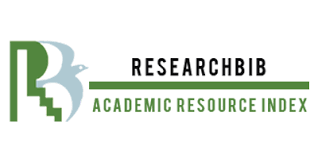GINGIVITIS IN THE AGE OF PUBERTAET
Keywords:
Adolescents, disease, wellbeing, oral contaminations, results, specialistsAbstract
As kids progress into puberty, their bodies go through significant physical, close to home and social changes. This formative period known basically everything there is to know about as adolescence achieves monstrous changes. While much spotlight is put on the noticeable outer indications of adolescence, for example, creating optional sex attributes, there are additionally significant changes happening beneath the surface inside the mouth. During this season of quick development, gum disease - irritation of the gums - turns out to be progressively common. This article will investigate the organic systems behind increasing gum disease rates in pubescence and examine deterrent dental consideration techniques urgent for long haul oral and in general wellbeing results.
References
Takei N, Carranza K. Periodontal therapy in the female patient. In: Clinical Periodontology. Tenth Edition Netherlands: Elsevier; 2007:636–37.
Kronman K, Loseche JF. Direct interaction of estradiol and progesterone with Bacteriodes melaninogenicus. J Dent Res 1979:58A;10.
American Dental Association Health Foundation Research Institute, Department of Toxicology. Antibiotic Interference with oral contraceptives. J Am Dent Assoc 1991; 122:79.
Trobisch P, Suess O, Schwab F. Idiopathic scoliosis. Dtsch Arztebl Int. 2010; 107(49): 875–83; quiz 884, doi:10.3238/arztebl.2010.0875, indexed in Pubmed: 21191550.
Fadzan M, Bettany-Saltikov J. Etiological Theories of Adolescent Idiopathic Scoliosis: Past and Present. Open Orthop J. 2017; 11: 1466–1489, doi: 10.2174/1874325001711011466, indexed in Pubmed: 29399224.
Mao SH, Jiang J, Sun Xu, et al. Timing of menarche in Chinese girls with and without adolescent idiopathic scoliosis: current results and review of the literature. Eur Spine J. 2011; 20(2): 260–265, doi: 10.1007/s00586-010-1649-6, indexed in Pubmed: 21153847.







